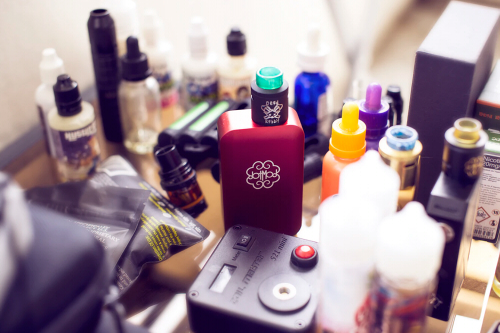The Vaping Panic Is out of Hand
Dr. Jeffrey A. Singer
This week, Gov. Cuomo issued an emergency order banning the sale of flavored e-cigarettes. Residents of Michigan will feel the effects of a similar ban in two weeks. These impulsive and unscientific acts are in response to a report by the Centers for Disease Control and Prevention that 530 people scattered across 36 states plus the U.S. Virgin Islands, with a median age of 19, have been hospitalized with Vaping Associated Pulmonary Illness (VAPI). Sadly, seven deaths were reported among six states.
These overreactions would seem laughable if they didn’t have such a great potential to inflict harm – both on tobacco smokers trying to quit and teen vapers who are more likely to use dangerous bootleg products.
There were an estimated 11 million vapers in the U.S. in 2018. If the CDC’s reports are comprehensive, that translates into a VAPI rate of 0.005%, with a mortality rate of 0.00006%. For perspective, the CDC reports tobacco cigarettes account for 480,000 deaths per year and are responsible for one in five deaths annually. To be sure, harmful effects from long term vaping may one day become evident, but these 530 reported cases have come to the public’s attention after vaping has been in use for more than 10 years in this country.
The evidence so far is that all or most of the deaths and cases of VAPI were the result of vaping with substances obtained on the black market, generally containing THC or cannabis, cannabis wax and oils, or bootlegged flavored cartridges that used vitamin E oil as a solvent. Vitamin E and other oils can cause severe chemical pneumonitis. Some of the decedents had other serious coexisting medical problems.

E-cigarettes have been shown in scientific studies to be an effective means of getting tobacco smokers to quit. It’s the nicotine in tobacco smoke that makes smoking addictive, but it is the other components of the smoke that cause cancer, lung disease and cardiovascular disease. Nicotine, while potentially addictive, is relatively harmless. It has properties similar to caffeine: a stimulant that can affect pulse and blood pressure and increase alertness. Over the long term, it may have some harmful cardiovascular effects but, according to Britain’s Royal Society of Public Health, “nicotine by itself is fairly harmless.”
Because of its effectiveness in getting smokers off of tobacco, the Royal College of Physicians has proclaimed, “in the interests of public health it is important to promote the use of e-cigarettes, NRT [Nicotine Replacement Therapy] and other non-tobacco nicotine products as widely as possible as a substitute for smoking in the UK,” and Public Health England states e-cigarettes are at least 95% safer than tobacco cigarettes.
In recognition of vaping’s benefits in reducing the harms from tobacco smoking, the New York and Michigan bans do not apply to tobacco-flavored vaping cartridges, only to fruit-, candy- and menthol-flavored ones. But surveys repeatedly show that anywhere from 92% to 94% of former smokers who switched to vaping preferred the fruit-, candy- or menthol-flavored forms.
The ban on flavored vaping is rooted in the fact that teen vapers seem to prefer the fruit, candy or menthol flavors over the tobacco flavor. But e-cigarette sales to those under 18 have been prohibited since 2016, so the teens are already tapping the black or grey market in order to vape. And while teen vaping has been surging, teen tobacco smoking is at an all-time low. Yet research shows that fruit or candy flavored e-cigarettes are not determinants of teen vapers moving on to tobacco.
To summarize: Ostensibly to prevent teens from getting addicted to comparatively harmless nicotine by vaping with flavored e-cigarettes they already get illegally, Michigan and New York are banning adults from legally obtaining the flavored e-cigarettes that are their preferred means of switching from tobacco. Meanwhile, since young people already get their e-cigarettes on the black market, the ban increases the likelihood that bootleg flavored e-cigarettes will be made or laced with dangerous substances, increasing the risk of serious illness or death. The ban also opens up yet another market to drug cartels and gangs.
Already the hysteria ginned up by the media portrayal of the recent vaping illnesses as an “epidemic,” combined with the impetuous reactions of political leaders, have gotten some vapers to switch back to tobacco.
The urge to act in response to an unsubstantiated panic leads to ham-fisted policies. It never ends well.








